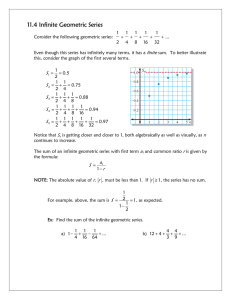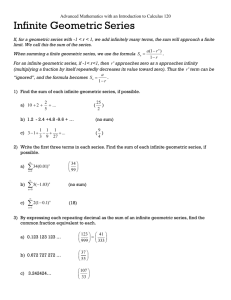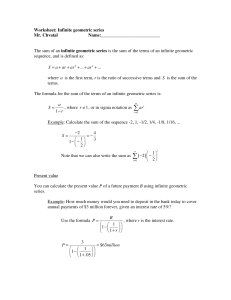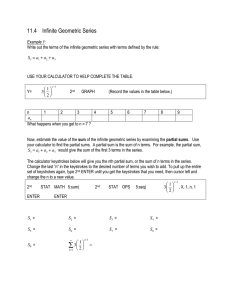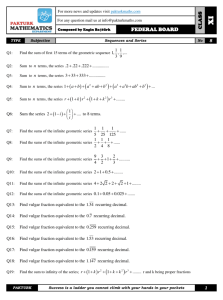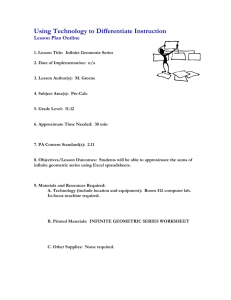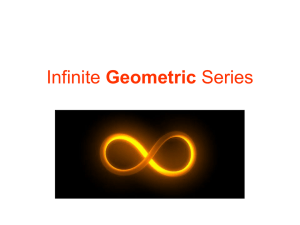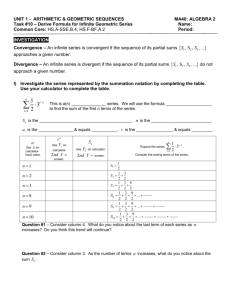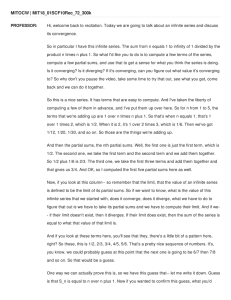Investigating Infinite Geometric Series
advertisement
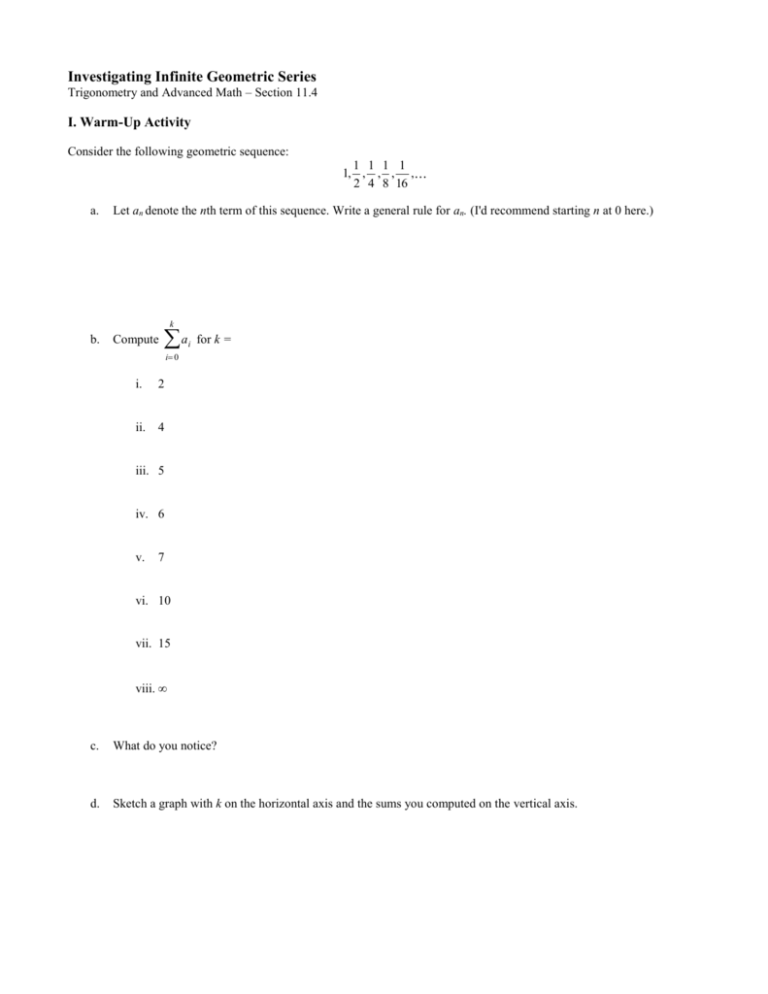
Investigating Infinite Geometric Series Trigonometry and Advanced Math – Section 11.4 I. Warm-Up Activity Consider the following geometric sequence: 1 1 1 1 1, , , , , 2 4 8 16 a. Let an denote the nth term of this sequence. Write a general rule for an. (I'd recommend starting n at 0 here.) k b. Compute a i for k = i 0 i. 2 ii. 4 iii. 5 iv. 6 v. 7 vi. 10 vii. 15 viii. c. What do you notice? d. Sketch a graph with k on the horizontal axis and the sums you computed on the vertical axis. II. Further Investigation: Other 1/n Fractions In the previous geometric sequence, we had a0 = 1 and r = ½. Let's now consider some related sums. First, leave off the a0 term and compute the sum a . i i1 We'll focus on similar sequences. Let's fix a0 at 1 and see what happens with various choices of r. First, we'll try some fractions. In each case, write out the first few terms of each sum and then use a calculator to make a good guess as to what you expect the infinite sum to be. a. i 13 i1 b. i1 c. i1 d. 1 i 4 1 i 5 i 16 i1 e. i1 1 i 10 Can you make a conjecture as to what happens in general? III. A Third Investigation: Other Series Using the same calculator strategy as before, estimate the following infinite sums. Be careful! a. i 83 i1 b. i1 c. 3 i 8 i 283 i1 d. 2 i i1 e. i 45 i1 In which cases does the term seem to settle on a given value (called a convergent series) and in which cases does it keep growing (called a divergent series)? Now then, recall the following formula we derived for the sum of the first n terms of any geometric sequence: 1 r n Sn a1 1 r For choices of r where you said the series converged, what happens to rn as n gets larger and larger (i.e. the limit of rn as n goes to infinity)? So then, what happens to 1- rn as n approaches infinity? What happens to the above formula? IV. A Formula and Some Problems Conclusion of our investigations: The sum S of an infinite geometric series with first term a1 and common ratio r is given by the formula _______________ when ___________ _______________ when ___________ S= Take a moment and see that this formula agrees with what you computed for any of the sums on the first page. Problem 1: Compute a. 3(0.7) i1 b. 1 i1 1 1 1 4 16 64 Problem 2: An infinite geometric series with first term a1 = 4 has a sum of 10. What is the common ratio of the series? Problem 3: Converting a Repeating Decimal to a Fraction Consider the repeating decimal 0.18181818… We could express this as an infinite series. The first term is 0.18. The second term has to add on the pattern "18" but moved over two decimal places. We achieve that by dividing by 100 (or, equivalently, multiplying by 0.01). So, the second term is 0.0018. The third term is 0.000018. a. What are a1 and r for this sequence? b. What is the sum of the corresponding infinite series? Keep your result as a fraction. c. Try entering the fraction you get into your calculator. Do you get 0.18181818…? d. Try repeating this process for 0.534534534… Homework: Algebra II Book, Section 11.4: #17-28 odd, #29-45 every other odd
